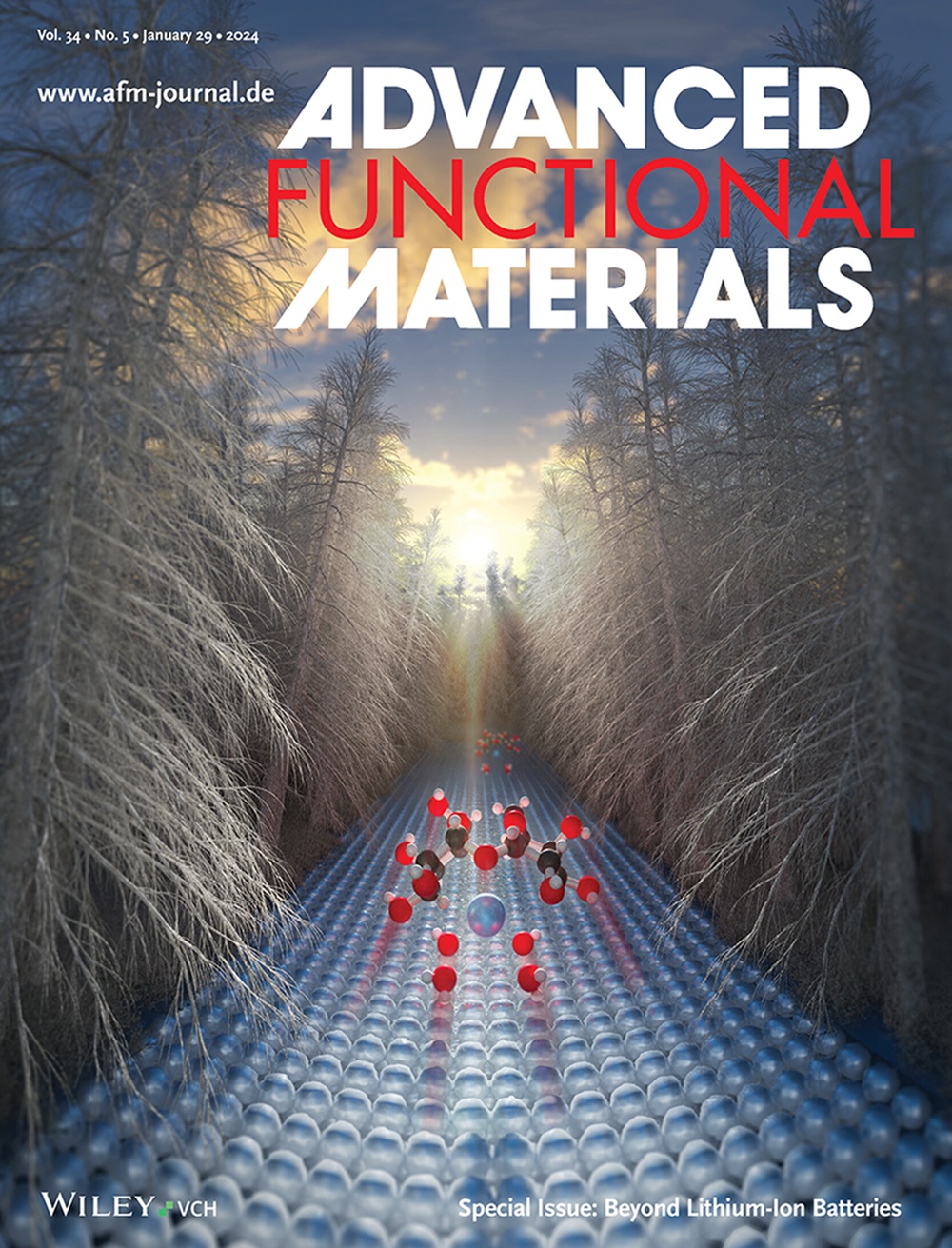Developing a One-Pot Strategy to Synthesize Metal–Covalent Organic Frameworks as Catalysts for Polysulfide Conversion and Ion Calibrators for Lithium Deposition
IF 18.5
1区 材料科学
Q1 CHEMISTRY, MULTIDISCIPLINARY
引用次数: 0
Abstract
Introducing metals into covalent organic frameworks (COFs) to synthesize metal-COFs (MCOFs) presents novel opportunities for designing highly efficient catalysts to address the sluggish conversion of polysulfides and for developing effective ion calibrators to mitigate uncontrolled lithium dendrite growth in lithium–sulfur batteries (LSBs). Herein, a facile one-pot strategy is proposed to integrate Zn single atoms into the COF framework through coordination with N and O atoms. Comprehensive characterizations of the microstructure, morphology, and chemical environment provide convincing evidence that Zn exists in Zn-COF as single atoms with a +2 state. Leveraging the synergistic advantages of a high Zn content (12.43%) and an ordered porous structure, Zn-COF demonstrates excellent catalytic activity for polysulfide conversion, effectively suppressing the shuttle effect and enhancing reaction kinetics. Additionally, the ordered porous structure promotes a uniform lithium-ion flow, facilitating homogeneous lithium deposition. Consequently, the comprehensive electrochemical performance of LSBs is significantly improved under both conventional and high-sulfur-loading conditions. This work presents a simple and scalable strategy for integrating single atoms into COFs, thereby introducing robust catalytic sites and ordered porous structures for LSBs. It offers valuable insights and opportunities for advancing efficient polysulfide catalysis and effective lithium dendrite inhibition strategies.

一锅法合成金属-共价有机框架作为多硫化物转化催化剂和锂沉积离子校准器
在共价有机框架(COFs)中引入金属来合成金属-COFs (MCOFs)为设计高效催化剂解决多硫化物转化缓慢问题以及开发有效的离子校定剂来缓解锂硫电池(LSBs)中不受控制的锂枝晶生长提供了新的机会。本文提出了一种简单的一锅策略,通过与N和O原子的配位,将Zn单原子整合到COF框架中。微观结构、形貌和化学环境的综合表征提供了令人信服的证据,证明Zn在Zn- cof中以+2态的单原子形式存在。利用高Zn含量(12.43%)和有序多孔结构的协同优势,Zn- cof在多硫化物转化中表现出优异的催化活性,有效抑制了穿梭效应,提高了反应动力学。此外,有序的多孔结构促进了锂离子的均匀流动,有利于均匀的锂沉积。因此,在常规和高硫负载条件下,LSBs的综合电化学性能都得到了显著提高。这项工作提出了一种简单且可扩展的将单原子集成到COFs中的策略,从而为lsdb引入了强大的催化位点和有序的多孔结构。它为推进高效的多硫化物催化和有效的锂枝晶抑制策略提供了宝贵的见解和机会。
本文章由计算机程序翻译,如有差异,请以英文原文为准。
求助全文
约1分钟内获得全文
求助全文
来源期刊

Advanced Functional Materials
工程技术-材料科学:综合
CiteScore
29.50
自引率
4.20%
发文量
2086
审稿时长
2.1 months
期刊介绍:
Firmly established as a top-tier materials science journal, Advanced Functional Materials reports breakthrough research in all aspects of materials science, including nanotechnology, chemistry, physics, and biology every week.
Advanced Functional Materials is known for its rapid and fair peer review, quality content, and high impact, making it the first choice of the international materials science community.
 求助内容:
求助内容: 应助结果提醒方式:
应助结果提醒方式:


